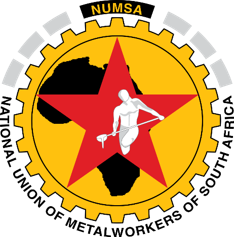Fosatu built Cosatu
April this year marks the 30th anniversary of the formation of the Federation of South African Trade Unions (Fosatu). Dinga Sikwebu spoke to two Numsa officials who were part of the federation.
As it is customary, this year’s African National Congress (ANC) birthday statement on 08 January opened with a list of historical events to be commemorated in 2009.
Among the dates to be celebrated is the 130th anniversary of the Battle of Isandlwana, the 65th birthday of the ANC Youth League, the 40th commemoration of ANC’s Morogoro Conference and the 30th birthday of the Congress of South African Students (Cosas). Strangely missing from the list of events to be commemorated is the 30th anniversary of the founding of the Federation of South African Trade Unions (Fosatu). Fosatu is the predecessor of the Congress of South African Trade Unions (Cosatu).
About a third of 460 000 workers who formed Cosatu in 1985, came from Fosatu. Cosatu worker leaders such as John Gomomo, Chris Dlamini and Ronald Mofokeng cut their teeth in Fosatu.
Both the Metal and Allied Workers Unions (Mawu) and the National Automobile and Allied Workers Union (Naawu) – two of the unions that were in the merger that led to Numsa – were affiliates of Fosatu. The two first general-secretaries of Fosatu came from the unions that were the forebears of Numsa.
It is Fosatu that started the unity talks that led to the formation of Cosatu. “Many of the principles of Cosatu such as worker control, non-racialism, strong shopfloor organisation and trade union independence come from Fosatuâ€, says Numsa News editor Jenny Grice.
Grice worked for Fosatu from 1983 and was for a brief period the federation’s acting regional secretary in KwaZulu-Natal. Formed in a church hall in Hammanskraal in April 1979, Fosatu brought together 45 000 workers in 12 unions.
By the end of 1984, the federation had grown to 120 000. Together with Cosas, Fosatu played the leading part in the biggest regional stayaway on 5-6 November 1984.
The stayaway was the biggest expression of the strategy of worker-student action that became one of the strategies against the apartheid state. “Many comrades misinterpret Fosatu’s political approach. Fosatu wasn’t saying workers must not be involved in the community.
Under repressive conditions, the federation had a two stage approach – workers had to gain confidence by engaging employers at the point of production before they went into communities. It was a tactical matterâ€, says Numsa’s head of collective bargaining Bafana Ndebele.
Ndebele became a member of Mawu in 1976 while he worked at GEC in Isando, Johannesburg. Reminiscing about their experiences in Fosatu both Grice and Ndebele spoke about how Fosatu linked its organising and education with cultural activities – choirs, plays and poetry groups.
Ndebele still remembers the end of the year picnics where shopstewards brought their families. “Those days there were no fancy four-star hotels for meetings and workshops.
It was dormitories in church venues and brown bread with polonyâ€, says Grice. Wits University will host a Fosatu exhibition from May 25 – 5 June. All are welcome.
If you belonged to a Fosatu union and have something to share (a photo, a memory, a t-shirt) in the exhibition, please send to Michele Pickover, c/o William Cullen Library, Private BagX1, PO Wits 2050e-mail: michele.pickover@wits.ac.za; Fax: 011-717 1927 (for attention Michele Pickover)
Source
Numsa News
